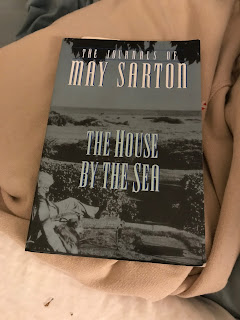Recently I have read two novels by Sarah Dunant: The Birth of Venus and In the Company of the Courtesan. The first novel is set in Florence during the Renaissance, and the second in Venice during the mid 1500s. While I learned some history and other interesting and unusual facts from both novels, I did not love either one. Both times, at about the midpoint of the book, I wasn’t sure I was going to finish. I’m not sure why, but neither book really captured me. I liked The Birth of Venus better just because I enjoyed the plot more. In the Company of the Courtesan had too much personal detail about the life of a courtesan and about the relationships between men and women. (Guess the title should have been a hint to me--duh.) Both novels did a good job of making me feel like I had been to another time and place.
Some of the interesting facts I learned from the novels:
Wealthy Florentine families had their own chapels in their palazzos, and they hired artist (some famous and some not) to paint frescos in them.
I learned about how frescos are painted, which I am not going to explain here.
In order to keep the family wealth intact, only the first son was allowed to marry. His new family stayed on in the family palazzo, and the family wealth and business were his. The other sons had choices including: university studies for law degrees, military service, and the priesthood, among others. I guess this surfeit of unmarried, perfectly healthy men explains the thriving courtesan trade.
Florentine families could only afford dowries for their first and possibly second daughters. One of the other daughters might be allowed to stay at home and serve as the governess for her married brother’s children. The other daughters were sent to convents with or without their consent.
Noble girls and women were not allowed to go outside unattended. They were not allowed to speak to unrelated men except in family-controlled situations.
Women were not allowed to be artists, regardless of their talent, but there was at least one situation in which a nun painted the fresco in a chapel at her convent.
In 1528, Charles V, the Holy Roman Emperor, sacked Rome. Many Romans fled to other Italian cities as refugees.
Venice was built on islands in a lagoon and has a combination of canals and alleys cutting through it. A fondamenta is a street beside of a canal.
The Jews in Venice were confined to a ghetto and were used as bankers by the other Venetians.
Venice called itself the most serene republic, La Serenissima. It was ruled by nobles, who elected a leader called a doge. The doge was a noble. He ruled at the pleasure of the nobles until he died. To prevent one family from becoming the ruling family, when a doge died, his family was excluded from the next doge election. The laws of the republic were enforced by the Council of Ten, which consisted of ten judges, the doge, and some noblemen. They tried, convicted, and sentenced anyone accused of breaking laws. Some of the laws regulated political and religious beliefs, so some people were executed for being on the wrong side of the government and/or the church. Sometimes people were executed by drowning.
The doge lived in the Doge’s Palace, where the government meetings, including trials, were held. The prison holding accused criminals was also in the Doge’s Palace. Along the outside facade of the palace are many statues. One of the statues in the palace is a lion with his mouth open. If a citizen wanted to accuse another citizen of breaking the law, he could write his accusation on a piece of paper and put it through the lion’s mouth.
Venice served as a way-station for trade between east and west for many years. This made her a rich city, but with the discovery of a trade route around Africa, her importance and wealth began to wane.



1 comment:
You women got screwed in Italy back then.
Post a Comment